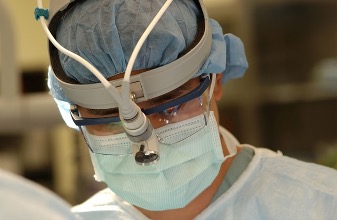John A. Macoviak is a retired heart transplant surgeon and specialist in cardiothoracic surgery living in California. Dr. Macoviak is a frequent contributor to several health publications and below he discusses some of the recent advances in heart surgery making the news.
Every year new advancements help heart surgeons save the lives of countless people who suffer from heart disease. John A. Macoviak explains that as surgical technology and techniques continue to innovate, surgeons are able to perform increasingly complex procedures with better outcomes. Today, surgeons are able to save patients who just a few years ago would have likely died.
Dr. John A. Macoviak explores some of the big innovations in heart surgery currently taking the medical field by storm. These technologies have come to fruition thanks to new production methods, digital computing, and greater funding across the world, allowing patients to survive even the worst of circumstances.
3D-Printed Surgical Implants and Equipment
John A. Macoviak reports that one advancement with lots of promise is the advent of 3D printing. 3D printing is the process of creating a three-dimensional object from a digital model. This technology is being used by surgeons to create customized surgical implants and tools that can be used during surgery.
3D printing has already been used to create a custom-made
titanium sternum implant for a patient who had her sternum removed due to cancer. John A. Macoviak explains that the implant was created using a 3D printer and was customized to fit the patient’s exact dimensions. The implant was then implanted into the patient’s chest cavity.
3D printing is also being used to create custom-made heart valves. These valves are made from a biodegradable material that is designed to dissolve over time. This eliminates the need for a second surgery to remove the valve after it has served its purpose.
John A. Macoviak reports that doctors have even gone as far as to use 3D printing to create custom-made tools for heart surgery. These tools can be customized to fit the specific needs of each individual patient. This allows surgeons to have the right tool for the job, which can lead to better outcomes.
Although the use of this technology in heart surgery is still in its infancy, as the technology continues to evolve, John A. Macoviak says it is likely that even more innovative uses for 3D printing will be developed. This technology has the potential to revolutionize the way heart surgery is performed and could help save the lives of countless people.
Percutaneous Aortic Valve Replacements
Prior to a few years ago, if you suffered from aortic stenosis, you likely wouldn’t have many medical options. John A. Macoviak explains that aortic stenosis is a narrowing of the aortic valve opening that makes it difficult for the heart to pump blood to the rest of the body. In some cases, aortic stenosis can be treated with medications but, in most cases, surgery is needed to replace the aortic valve.
Traditionally, you’d have to undergo open-heart surgery. This surgery is done by making a large incision in the chest and opening the heart. The aortic valve is then replaced using a patch or valve from a donor's heart. Open heart surgery, though, is a risky surgery that puts the patient at risk of stroke, cardiac arrest, and blood clots.
Fortunately, doctors have innovated a new surgery to deal with aortic stenosis—
percutaneous aortic valve replacements. This newer procedure is a minimally invasive surgery that replaces a diseased or malfunctioning aortic valve without having to open the chest cavity.
Instead, John A. Macoviak explains that this procedure is performed by making a small incision in the chest and inserting a replacement valve through the blood vessels. The minimally invasive nature of a percutaneous aortic valve replacement makes it far less likely to kill the patient or lead to serious side effects.


Watchman Implants for Atrial Fibrillation
John A. Macoviak reports that atrial fibrillation (AFib) is a common heart rhythm disorder that causes an irregular and often rapid heart rate. When the heart beats this way, it doesn't pump blood as effectively as it should. This can lead to blood clots, stroke, heart failure, and other heart-related complications. Until recently, anyone with atrial fibrillation would be treated with blood thinners to prevent these clots.
However, recent developments have produced a new implant device called the Watchman. Unlike other heart implants, it doesn’t affect the heart’s performance but, instead, helps close the heart’s left atrial appendage, preventing it from pooling and clotting blood. This makes the Watchman an ideal solution for anyone who can’t take blood thinners according to John A. Macoviak.
It’s unclear how readily available the Watchman will be to the general population but, as it undergoes further research, it’s sure to find its place among other famous implants such as the pacemaker.
Final Thoughts
In just a few years, heart surgery has come quite a long way. New techniques and technologies, such as 3D printed valves and microsurgeries, have allowed surgeons to perform increasingly complex procedures with greater accuracy and safety. This has led to improved outcomes for patients and has helped to reduce the incidence of heart-related complications and deaths.

